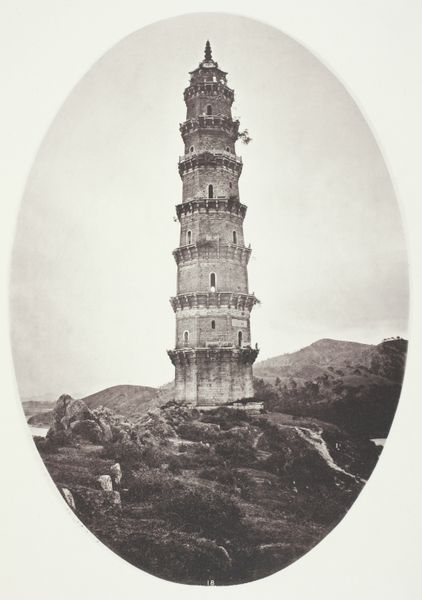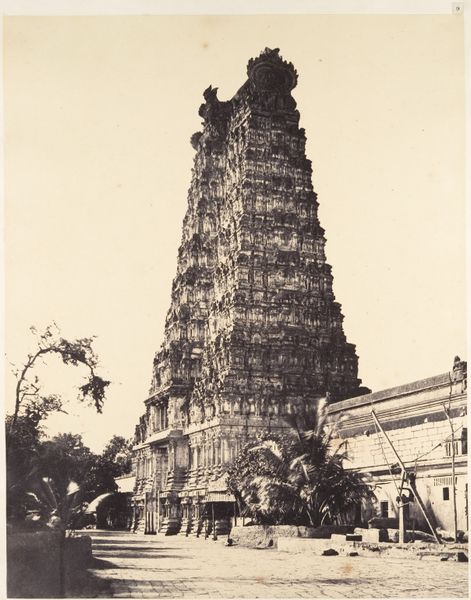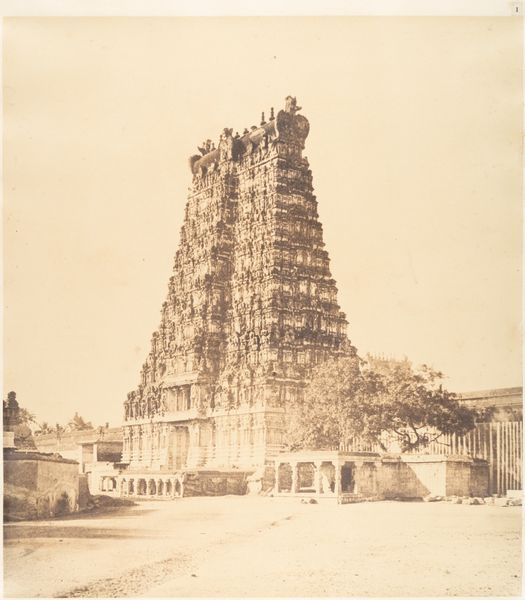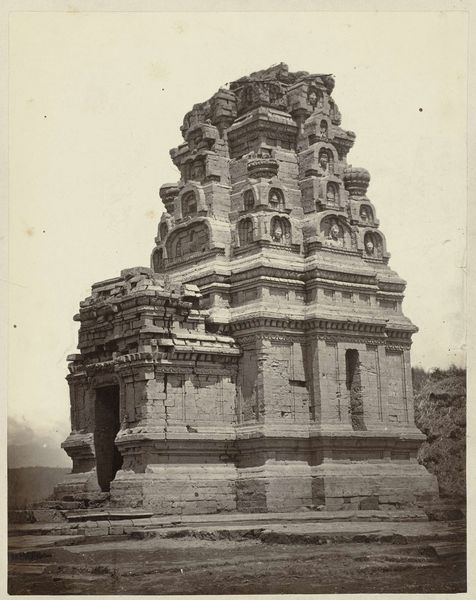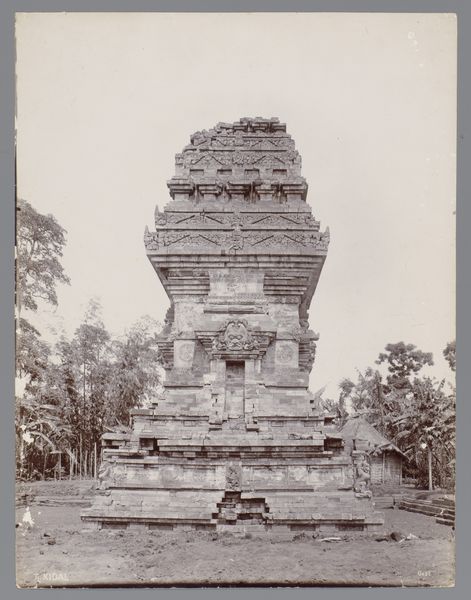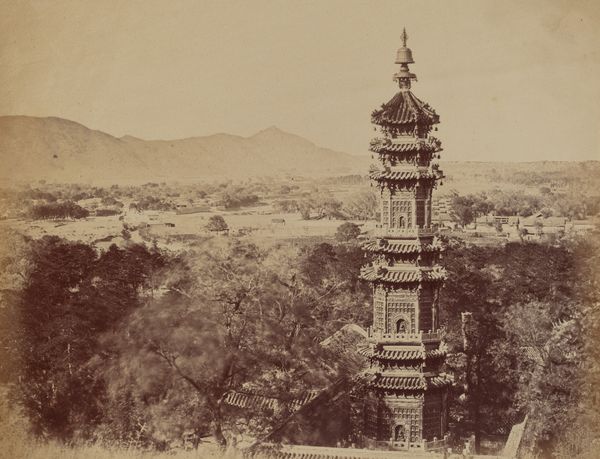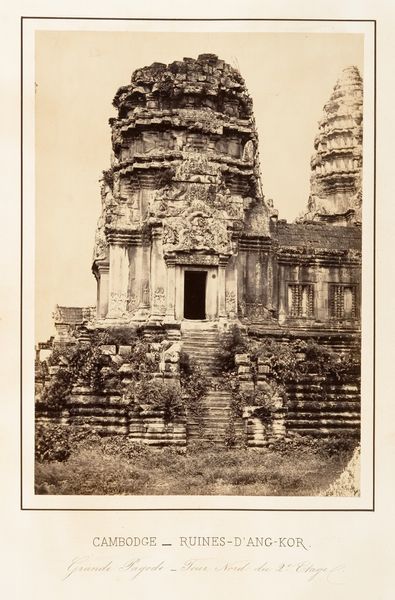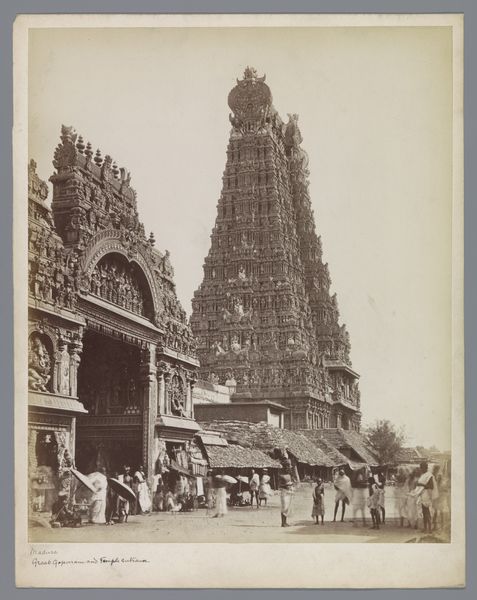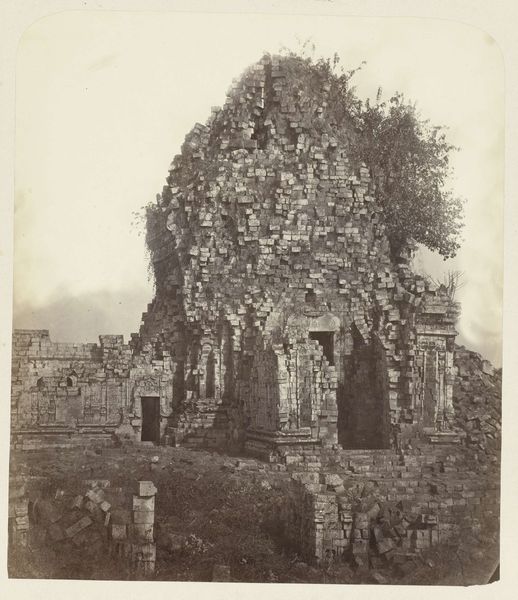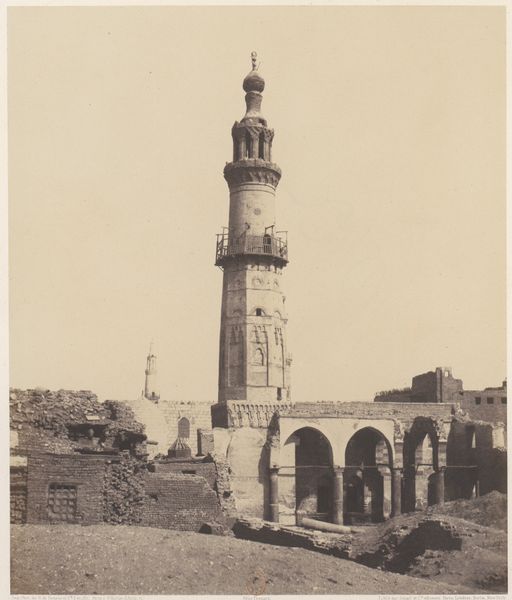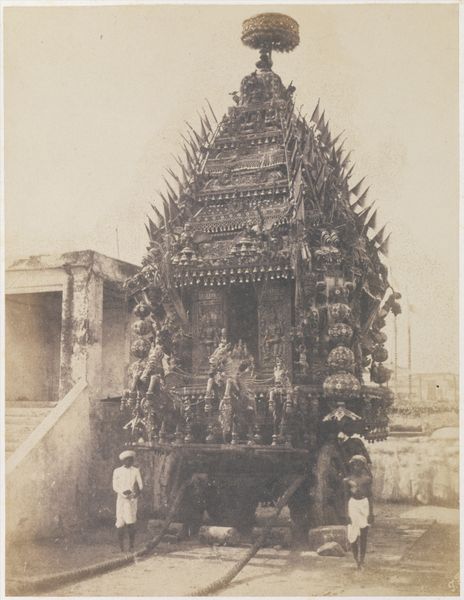
photography, albumen-print, architecture
#
asian-art
#
landscape
#
outdoor photography
#
photography
#
cityscape
#
albumen-print
#
architecture
Dimensions: Image: 13 3/8 × 9 13/16 in. (33.9 × 24.9 cm)
Copyright: Public Domain
Editor: Here we have "Pagoda on the Execution Ground, Foochow", captured in 1869 by John Thomson, an albumen print currently residing at the Metropolitan Museum of Art. The sepia tone lends it a somewhat somber feel. It really emphasizes the height and solidity of the Pagoda. What strikes you about this piece? Curator: Well, considering Thomson's background as a social documentarian, it's intriguing to consider the location he chose: an execution ground. How do you think this choice of location might impact the reading of the image by its contemporary audience back in Britain? Did it reinforce existing colonial narratives? Editor: That's an interesting point. Maybe it's meant to exoticize and possibly even somewhat villainize the region, focusing on an unfamiliar and arguably violent practice, rather than more positive cultural aspects. Curator: Precisely. This photograph enters into a complex discourse around colonialism and visual representation. We might consider, how did photographs like these influence British public perception and subsequent political decision-making concerning China? Note the careful composition. It emphasizes the foreignness of this 'other' world through stark contrasts between imposing architecture and what the title tells us is a site of death. It frames our view in a very specific way, does it not? Editor: Definitely, and considering albumen prints were still relatively novel at this time, the sheer clarity would make a big impact, really cementing those potentially biased or incomplete ideas about Foochow in people's minds. It makes you wonder how this kind of image may have affected policy decisions around British Imperialism at the time. Curator: Absolutely. That connection between visual culture and real-world consequences is something we always need to remember. Editor: This photo definitely provides plenty to think about. It is more than a depiction of a pagoda in China. It shows how art acts as both document and propaganda.
Comments
No comments
Be the first to comment and join the conversation on the ultimate creative platform.

